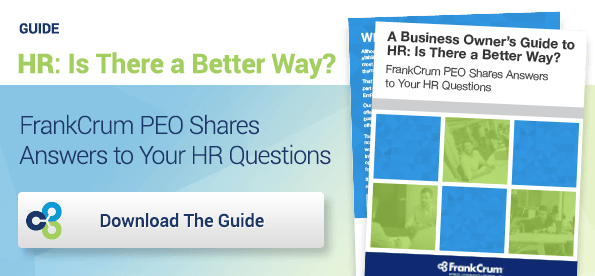 The following is an excerpt from our latest guide, "A Business Owner's Guide to HR: Is There a Better Way?"
The following is an excerpt from our latest guide, "A Business Owner's Guide to HR: Is There a Better Way?"
You offer benefits because you want to provide a well-rounded compensation package. What may surprise you, though, is the value current and prospective employees place on workplace benefits, which may include health care, retirement savings, Flexible Spending Accounts, paid time off and a number of voluntary benefits such as dental, vision, life, disability and various discounts – most or all of which are available through a PEO.
However, concerns about costs, changing regulations and compliance issues may sometimes overshadow the beneficial aspects of benefits programs in the employer’s mind. Following are several points you might consider as you navigate through the benefits landscape:
Will my employees value their benefits program?
In a recent Employee Benefit Research Institute survey, 88 percent of workers said that employment-based health insurance is extremely or very important, far more than for any other workplace benefit. In addition, three quarters of workers believed that the benefits package an employer offers prospective workers is extremely (36 percent) or very (41 percent) important in their decision to accept or reject a job. As for voluntary benefits offered through the employer but paid for at least in part by the employee, workers identified lower cost (compared with purchasing benefits on their own) and choice as strong advantages. It seems clear that employers who take the time to research and offer a comprehensive, affordable workplace benefits package are better able to hire and retain their employees.
How much will benefits cost? Why is my renewal cost so high?
Renewal rates are based on coverage and value, with utilization and participation being key drivers. One of the best ways to keep your renewal rate low is by increasing your participation to as close to 100 percent as possible.
What about changing regulations and compliance issues?
The best tools an employer can use are awareness of changing regulations and compliance issues, correct interpretation and correct application. These are also directly related to the cost of benefits — you must understand the regulations to know the cost that is attached to them. This is particularly timely in light of the implementation of the Affordable Care Act.




